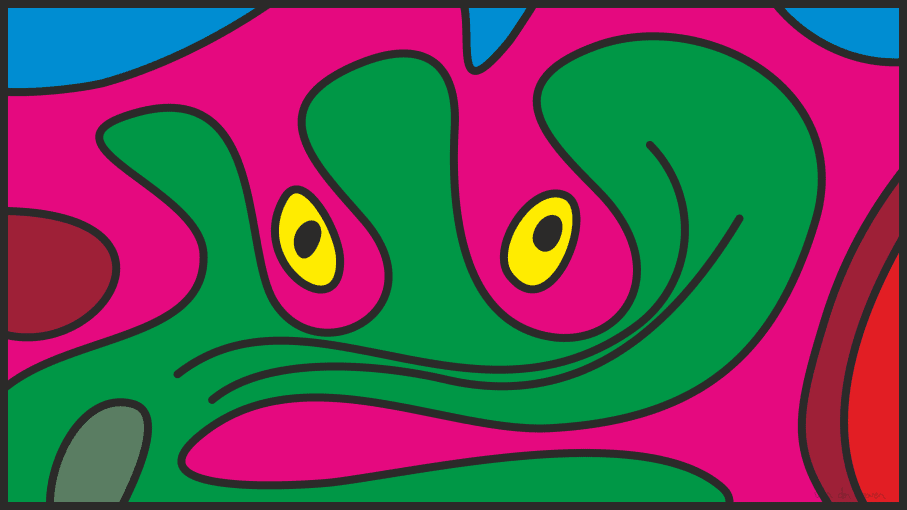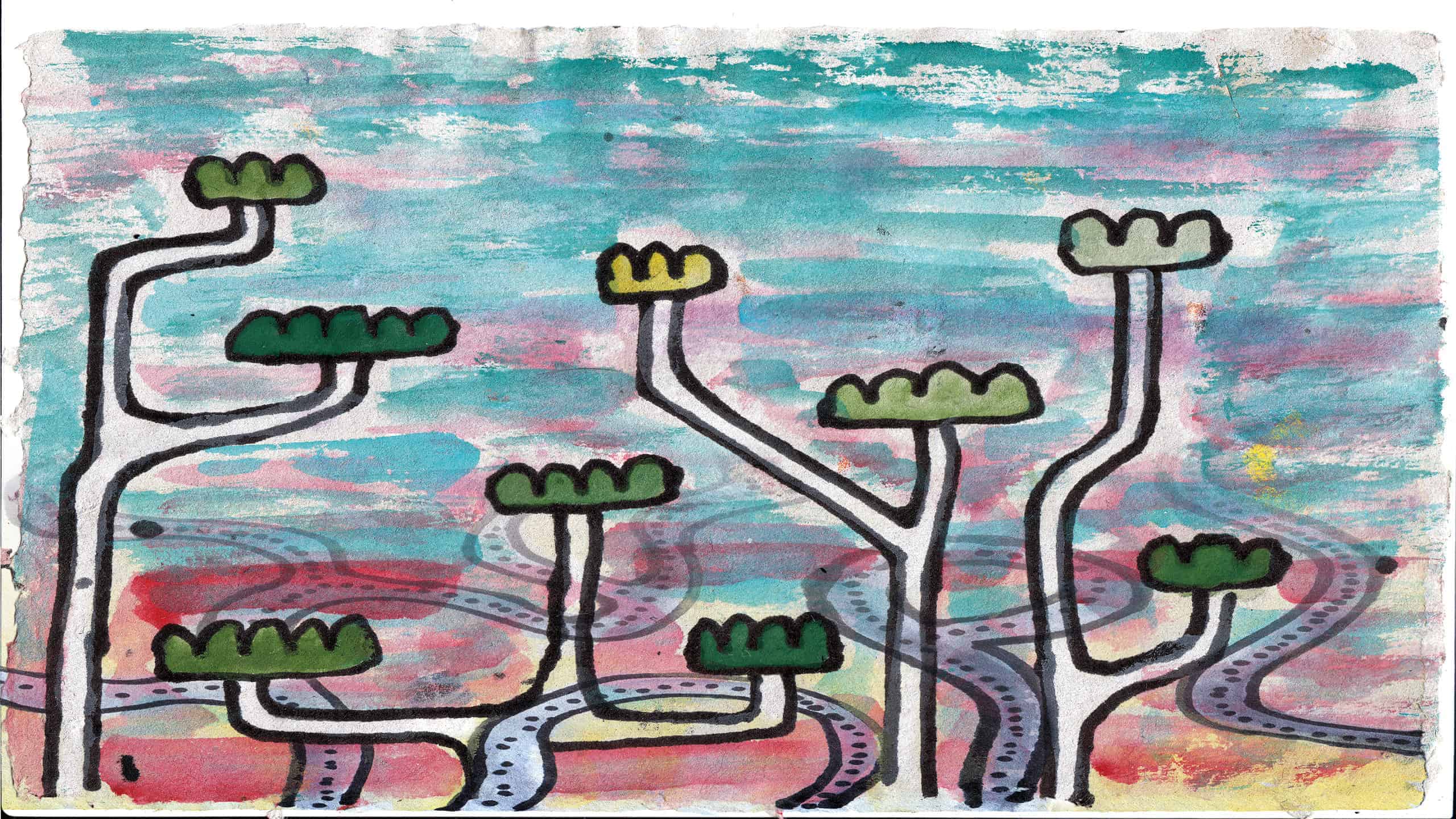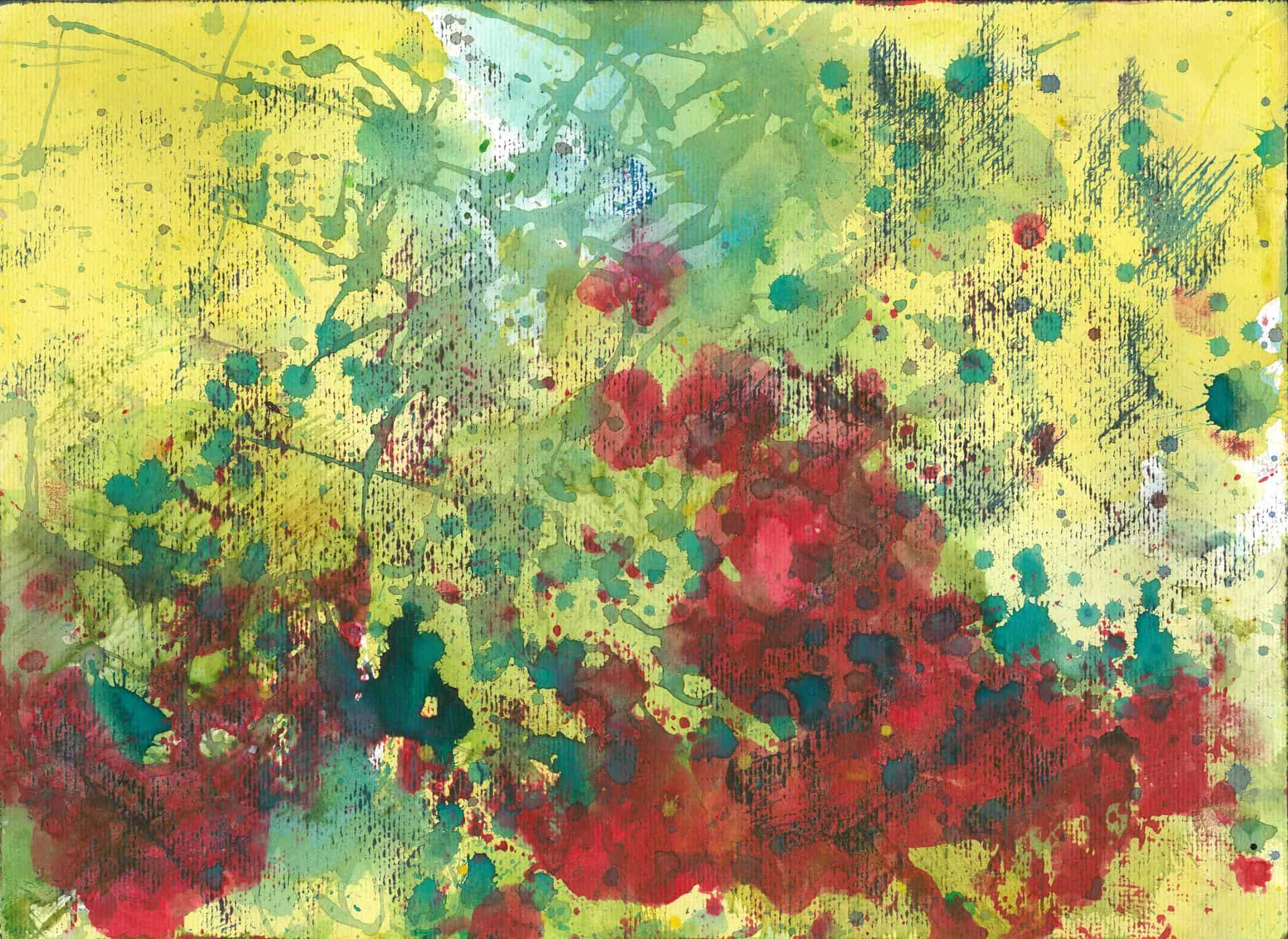Scientists are time-travellers, who can glimpse ~100 years into the future. When I think of the “the future”, here is what I ‘see’:
- I don’t see ‘manmade’ things flying everywhere; I see ‘birds’ and ‘insects’… behaving like drones. Or rather, I see drones –robots– acting like birds, fish and insects. A form of synthetic nature. Robots. Nanobots.
- I see a completely flat biodegradable pizza box that is able to reheat your pizza… at the push of a button… biodegradable battery included. Biodegradable materials.
- I see flexible circuit boards. Biodegradable/compostable circuit boards, adhesives and elastomers. Ones that feed nutrients into the soil rather than leaching out toxic chemicals. Compostable materials.
- I see homogenous materials exhibiting different physical and chemical properties at each end… or wherever else you wanted. Surfaces that change colour, texture, friction coefficient, refractive index, magnetic susceptibility or any one of —or combination of— any one of thousands of desired properties… inside or outside of them… like a television screen… except displaying an array –a matrix– of different properties. Metamaterials.
- I see changes in materials’ physical, mechanical or chemical properties… triggered in response to… other changes… such as temperature, composition, acidity. Dynamic materials.
- I see tyre compounds that become ‘grippier’ or ‘grow’ additional/deeper tyre tread patterns in the wet… according to the conditions. Responsive materials.
- I see trees… by the side of road… that automatically display the speed limit… and any other desired road signals… with reflective bark… again… according to the conditions. Adaptive materials.
- I see semi-organic ‘tentacles’ mounted on aircraft carriers… that can ‘catch’ helicopters and other flying craft… in mid flight. Organic materials.
- I see termites… genetically reprogrammed… to make skyscrapers out of biodegradable ‘cement’. Self-organising materials,
- I see buildings that simply… build themselves. Self-generating and self-regenerating materials.
- I see computers that never need new hardware. Computers that truly ‘adapt’ and ‘learn’. Light-based computers. Organic computers. Really advanced, biological computers.
- I see genetically engineered bacteria that can extract any elements we wish, from landfill.
[dropcap]A[/dropcap]ll these devices are not only possible –100% scientifically feasible– but even probable. Believe me. You ain’t seen nothin’ yet. Of what technology can deliver.
These ‘inventions’ do not break any laws of science. Far from it. They’re already in existence. And this is the potential I see whenever I look at animals and plants and think about them in terms of their material properties.
Everywhere I look, I see nano-materials that humans simply cannot yet compete with. We are not even in the race, the same league, let alone the same competition as nature.
I see people mixing cement today, smelting and forging steel —still— in the year 2016. And it’s a crude process at its very best; always from the “top down” scale direction, never from the “bottom up”.
Eventually though, as we play the game of “catch up” —by studying and ultimately copying nature— there’s really only ONE thing that stands in the way of scientists, engineers and designers creating, reverse-engineering these things (and more) in the future.
And that’s the threat of extinction. Because all of the above hypothetical inventions share one thing in common: they’re based on materials that are already found in living systems.
Nature is good for our emotional, psychological and physiological wellbeing. Nature is ‘natural’. Nature is ‘pretty’. Nature is ‘beautiful’. And all species have an equal ‘right’ to survival as any other. Isn’t that enough reason to want to protect it?
We humans cannot recreate a forest, a mountain view, a lake, a river or a natural shoreline. And where do many of us like to go for recreation, if we want to truly rejuvenate? Where do we go on holidays? We go to nature. Or even to some virtual ‘approximation’ of it.
Shouldn’t that be enough to save it? Apparently not. So if you want the cold, hard ‘justification’, the main scientific reason, to fight for all forms of biodiversity –the fundamental reason that all accountants, long-term financial planners and investors are really looking for– then here it is:
Simply put: if we scientists don’t have enough living systems –biodiversity– available to effectively be able to research, to study, then not only will the amazing device described above never get built by us, but we’ll likely find it harder and harder to survive the further we get into the future[note]You see, no species live in isolation. Our species doesn’t live in isolation. We haven’t yet moved ‘beyond’ nature. We haven’t! Nature is already subsidising us in almost every single aspect of our daily lives. [/note]. Indeed, we may find that at one point, it doesn’t get any easier at all — rather, that it gets harder. Much harder.
Yes we NEED different species. Not just for our own immediate survival (in terms of oxygen/air, clean/filtered water, fresh food). We need different species in order to be able to study them well into the future. We need as many different species as possible. We need species with even the most subtle differences, –in fact, especially the ones with the most subtle differences– to be able to eliminate the bane of every single well-trained scientist: variables. Or rather, more than one variable.
Suppose there were only two animal species in existence: an elephant and a stingray. Suppose. Just the two (never mind what they eat for now). Then it would be very hard to work out which genes cause which morphology in each animal. How do we know which gene causes the trunk and which forms the tusk? How do we know which gene forms the stingray’s tail or its spine? And so on. For every new variable in each animal, it becomes ever harder to distinguish between the genes, which genes cause which traits.
With insufficient samples, science is nothing. What about with no samples at all? How much is science worth then, with no samples?
Furthermore, the exact same protein may lead to different morpholgy when it is located in a different part of the genetic sequence, as in a different species. It’s not entirely predictable.
That’s why genetic engineers are never as clever as they think they are. That’s why there’s this whole “anti GMO” movement (well that’s one reason). Because if we knew EXACTLY what we doing, why, we’d be able to create practically anything we wanted. Already. Now. Today. Besides, some genes are redundant.
Do we know which ones? Do we know why? Do we know where? Do we know how? Do we know, for each and every single one of the estimated 1 trillion fast-disappearing species on planet Earth? I don’t think so. Genetics is not my area. Even so, I don’t think there are enough scientists alive today to know and study all of that genetic information; there is too much information out there. I don’t know. I know about materials science, not biology. I do know that biological materials are several orders of magnitude more complex than purely synthetic, manmade materials.
Now just imagine, say, that we had a woolly mammoth to study. Imagine if the mammoth was essentially the same as the elephant, all except for the hair. Just say. That gives us the ability to study what genes lead to the formation of hair cuticles (or which ones supress the generation of hair cuticles). Right?
Or imagine if we had a black panther and a pink panther. And in all other respects, they were equal. Well, technically, all we would need to be able to do is look for the differences in the genetic sequence between the two, and we would determine what the cause, the reason, for the colour to be either black or pink. Given enough samples, enough data, eliminating all the other variables, we would know.
The same might go for butterflies wings. One butterfly ‘species’ (or it may be an ‘inter’ species or a natural genetic strain or variant) may have much longer wings than the other. Then we would know which genes cause long wings (or alternatively, which genes cause short wings).
What about something else? One species of moth might have bigger spots or longer antannae. So now we have the recipe, the blueprint, for making long or short moths’ antannae. And just maybe medium-length antannae as well.
Another example. Imagine if we had two versions of zebras, say: one with stripes and the other without stripes. Then technically speaking, given enough time, we should be able to work out what genes give rise to striped patterns in zebras and what genes go on to form ‘plain’ zebras. And it might be a zebra. Or it might be a conch shell only found on one tiny Pacific Island. Or it might be something even easier to study in a laboratory setting, like the most seemingly insignificant little fruit fly.
Another example: one species of spider might have eight eyes total, four big and four small. And another, very similar species might have two small eyes, four medium-sized eyes and two very large eyes. So theoretically, we could study them both and work out which genes determine the size of a spider’s eye and what also determines their number of eyes and where they are positioned. And, by the way, yes, it turns out, that some spiders really do have no eyes, some have eight eyes, and some have up to twelve eyes.
So then knowing that, we should be able to create as many eyes as we want on something. Who knows? It might be that the spider with no eyes… is still genetically programmed for eyes… it’s just that the coordinates for the eyes… lie outside of the spider’s body… so that they simply “never appear”.
Well there are many cases like that in the insect world, where two species are separated by very subtle differences. Those species present ideal opportunities to study genetic variance on morpholgy (which is another way of saying ‘shape’ or ‘form’).
The real secret of life is not DNA. It’s how life manipulates those laws, bypassing or perhaps even utilising entropy, and into growing different physical structures [simultaneously] at the atomic, molecular, cellular and macroscopic scales. That is the truly fascinating part about life. The patterns and shapes in these organisms arise due to chemical and physical laws, yes, but they are still mostly genetically determined.
Another example: one type of squid might have a different number of sucker pads on its tentacles than the other one. So knowing that, we should be able to create as many sucker pads as we want on something. And as many tentacles!
It doesn’t really matter. The point is, if we knew what every single gene did and why —if we knew what each protein did when we put it in a certain place and the underlying reason or mechanism for that— all of a sudden, you realise that with the right genetic programming, we should be able to create practically anything. Synthetic organic beings for instance.
My point is, that is very valuable information. It’s information that has taken 4 or 5 BILLION years to arise and develop. Now just imagine if you had a savings account, one that you started 4 or 5 billion years ago. Like that valuable. That’s how fucking valuable it is. Right? Is that clear enough for everyone? It’s so valuable, no one individual can even put an accurate value on it. Not just priceless. Irreplaceable and priceless. Some things said to be ‘priceless’ can in fact be re-created. Not so with biodiversity, not so.
And species are already going extinct. Species we don’t even know about. Species we haven’t even discovered. It’s like we have money in a five-billion-year-old bank account of ours… and we don’t even know how much money we are losing from it… we are leaving the door to the vault wide, wide open. We are giving the keys to the criminals, encouraging them to take the money from our 5-billion-year-old bank account. That is what we are doing now. Killing our investment. Well the losses cannot continue indefinitely without some effect.
Not just that. But if we could truly ‘decipher’ the genetic code, we would be able to create ‘materials’, ‘beings’, ‘inventions’… with even less constraints than what nature already imposes!
So like many things that gain complexity with time, nature is genetically programmed, evolves, based on certain types of architecture. Nature, like everything else, builds upon this architecture as it evolves. It’s very hard to change that architecture after the fact. It’s the main reason that mammals are all so fundamentally similar. It’s the main reason that insects are all so fundamentally similar.
This ‘architecture’ is also the reason you don’t ever see an insect’s head forming on a human foetus, no matter how mutated or malformed. Or a lobster’s claws appearing from someone’s stomach region. Claws stay with crustaceans, fur with mammals. The furry crab is rare (although they do exist). They’re different, and seemingly incompatible, lineages. It’s certainly no coincidence. That’s certainly not say say “its a miracle” either. It’s just… the nature of evolution. Complexity. Emergence.
Another analogy. It’s a bit like how early version of Microsoft Windows (1.0, 2.0, 3.1, 95, XP, 98, etc) were all based on DOS programming. So for many years, we used to see DOS boot up. There was no way to get rid of the DOS component. It’s hardwired in to the backbone of the program.
Consider each different ‘phyla’ or ‘class’ as a different form of progamming. All mammals have spines, limbs and skulls. It’s what defines them. Each new species, then, has developed a type of new ‘trick’ to give it a competitive advantage.
Where am I going with this? Well, perhaps one day far into the future, when we really know what we’re doing —because right now we don’t—we’ll be able to override those natural architectural limitations. It would be a bit like… running Microsoft Windows in tandem with the Apple OS, via parallels software. Two different things, at the same time. The bests of both worlds, so to speak.
For example. We’ll be able to replicate just an elephant’s trunk, combine that DNA with an octopuses’ tentacles, and create something entirely new: a very new and efficient, multifunctional, self-healing, biodegradable warehouse picker/packer/sorter/organiser/crane type of thing. Sure there is a mechanical, pnuematic version of this elephant’s trunk already on the market. But it’s not self-assembling, self-healing or biodegradeable. Is it? Maybe if we tried to build that now, with genetic engineering… it simply wouldn’t work. Because species are different for a reason, aren’t they? Reproduction between species is supposedly not possible… due to the architecture. But who’s to say it’s ‘impossible’?
Perhaps we’ll be able to create a type of ‘human’ that truly does have blue blood, like Dr. Spock, based on copper-containing blue blood of the now-endangered horseshoe crab.
Or perhaps –in the very distant future– we’ll be able to create a spineless ‘human’ being, one with all the normal organs, but without all the bones, so that one that can flatten himself out like an octopus. Or a transparent humanoid. Or a humanoid that could change colours like a chameleon. Or a humanoid that could breather under water… or in low oxygen environments… I know this all sounds very zany to us now… but then… this is the distant future we are talking about.
From my perspective as more of a materials person, do we actually know what causes a jaguar’s spots to appear where they do? No, I don’t think that we do. Not what genes cause it but how the genes work. I read a book called “how the leopard changed its spots” which was quite interesting… it seems that DNA alone does not cause these patterns in animals. Rather it is the underlying chemical and physical laws that is mostly responsible.
The fact is, without further experimentation, we will not be able to uncover all of life’s mysteries.
And, by the way, I hope one day it will be possible to study the biology of animals without all the cages and cruelty associated with traditional laboratories. Maybe one day all we will need to do is sample one single cell, one strand of DNA. Who knows?
Further, no one is saying we have to research and exploit these other creatures for our own benefit. But once they go, they go. If they’re gone, they’re gone. When they are gone, they are gone. It’ll be too late to study their genetic code.
Because we need intact strands of DNA, don’t we? Not cryogenically-frozen DNA from animals that have been dead tens, hundreds or thousands of years. DNA, like any other polymer, degrades with time. It degrades and information is lost. It’s not all there. Even if we store it, some of it is gone. And that, right there, the degradation, is yet another variable that we try to eliminate with all of this ‘experimentation’.
Much better to preserve biodiversity… like a mine or a vast vault of untapped genetic information. Alive. That is the best way to maintain DNA, after all. Alive. That is what it has been doing for billions of years. I’d hate to see a strand of DNA that had been stored for a billion years. It wouldn’t be the same. It would have errors. Faults. Molecular damage. ‘Preserved’ food. It’s just not the same as fresh food, is it? You can taste it.
And what would accounts call it? All of this biodiversity? They’d call it a ‘bank’ of genetic information. And accountants… they consider ‘banks’ to be wise investments, don’t they? So I think all biologists know that protecting biodiversity is the best long-term investment humanity can possibly make. For future use.
Biodiversity is the most precious thing that there is and yet judging by the actions of some people, that message doesn’t seem to be getting through. I bet you we’d start changing our tune if a superior alien race landed and started obliterating everyone in sight claiming ‘fairness’ for all lifeforms.
There is a balance here that we really need to get right, in order to be able to survive. It’s absolutely vital.



